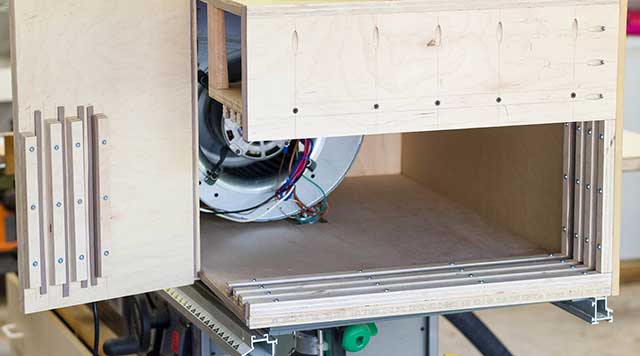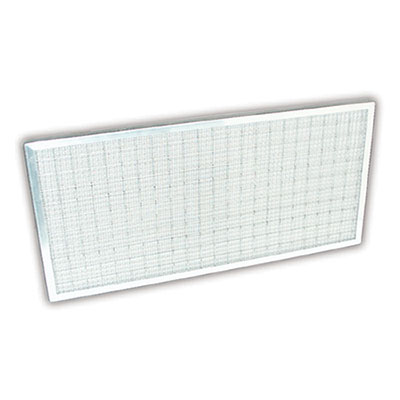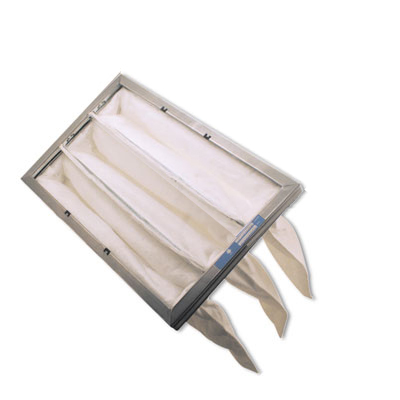
Shop-built 3-stage Air Cleaner Filter
Several years ago I built a basic air filter using an old recycled furnace fan, which I wrote about in this post. The original air cleaner was ugly, awkward to install via hanging chains, had a switch location which made it hard for my vertically-challenged wife to turn on, and was unsafe due to the exposed blower fan squirrel cage.

The original air cleaner — ugly, awkward, and too tall
I wanted to rebuild the filter to provide better fine-particle filtration and to have a different form factor to fit above a storage cabinet in our ever-evolving garage. I wanted to make it easier to install, less tall, to be easy for a shorter person to turn on & off, and to make the airflow direct-able. Additionally, while the original did a great job of filtering the air (and capturing mosquitos against its filter), I knew the finer-grained dust from cutting and sanding was likely not being captured by a basic furnace filter.
I need to give credit to the air filter built by Craig at No Wood Unturned Furniture Restorations for his air cleaner design which I found here. Specifically, he was able via email to point me towards the best source for the pocket air filters I used.
Additionally, I need to give special thanks to my friend Travis Fowler from Century A/C Supply in Austin. He asked one of his clients for an old A/C furnace blower motor which I used for the fan. If you want to build one of these, make friends with your HVAC contractor – they take squirrel cage blower fans like this to the metal recycler literally every day. A six-pack and a hearty thanks will likely earn you several of these fans.


Texas is hot… very hot in the summer. By installing this grille, not only are fingers protected from the spinning squirrel cage fan, but the wonderful rush of cool air can be directed right at my working position at the tablesaw and my workbench.

There are 3 sets of ribs which hold the air filters in place. These have foam weatherstripping to provide a tight seal.

There are 3 stages of air filters in the air path

There are 3 filters in the airflow path:
Basic cheap furnace filter (12″ x 24″ x 1″) (amazon link)
This disposable filter captures the largest dust particles as well as errant mosquitos & moths.
Washable Electrostatic Air Filter (12″ x 24″ x 5/8″) (Penn State Industries Part #ACES1224)
This filter is listed as 85% efficient at capturing 1 micron particles.
Deep Pocket Air Filter (12″ x 24″ x 18″ deep) (Penn State Industries Part #AC65F)
This filter is listed as 85% efficient at capturing 1 micron particles.
Here is a closeup of the filters.


Shop Drawings

Isometric

Front Elevation

Front Elevation Section

Left Side Elevation

Right Side Elevation
Parts List:
Part# Dimensions Name
1) 24. x 32. Top/Bottom
2) 24. x 32. Top/Bottom
3) 19.5 x 22. Fan Front
4) 19.5 x 32. Back
5) 10. x 19.5 Door
6) 6.75 x 24. Right Side
7) 18. x 24. Left Side
Cutlist:




VERY Impressive!!
I threw together a similar setup to filter the air in my car’s cabin. One issue I faced was that when I placed a HEPA filter on the blowers intake, the blower started to draw air in from the outlet. There was still air blowing out the outlet, but I noticed that I could get small pieces of paper to stick to the grating over the outlet, suggesting there was air being sucked in through part of the outlet and therefore bypassing the fitler. Have you tested your filter for this inefficiency?
Hi Patrick, I’ve not noticed this behavior in my filter.
Ok thanks! Yeah I’m wondering if I should blow the air through the filter instead of sucking it in through the filter. Do you think it will make a difference?
It shouldn’t make any difference. I would assume best practice is to filter the air prior to the fan just so that junk doesn’t accumulate on your fan & motor.
You assumed it right Sir! As a Maintenance Tech. I deal with air filters on three large buildings (HVAC) systems, and it doesn’t work the other way around. 1- you end up killing the blower motor with dust. 2- you cabinet will be filled with dust, and chances are hi of getting the dust ignited and causing a a fire from any sparkle that may will come from the motor. Just using weather strips on the plywood edges of all doors, and switch, calking all glued joints with clear silicone will stop the air leakage. One thing to remember; with three stage filtration system you got make sure the blower is strong enough to move the air though. the heap filter created lots of obstruction when is new and dirty forget about it, so keep the pre filters clean or changing it on regular bases is very important. your design is one of the best I seen so far, simple and practical.
I would check your fan. In particular most household fans (found in furnaces) are design for unrestricted air flows (something like 1200 to 1600 c.f.m. and with relatively low static inlet pressure. That means if use a more efficient filter or stacks of filters your fan cannot draw air through them with out suffering flow loss or in you case it found enough bypass leaks to compensate.
you are absolutely correct. I’m not being nice to this fan considering what it was originally designed to do. I’m not doing this fan any favors by running it with zero output resistance and lots of input resistance. However, I don’t care b/c if I burn out this fan which cost $0, I’ll get another one from an HVAC guy for $0.
Thanks very much for this plan. I’m about to use it in my micro-shop. It’s a Barn style, 8×12, with an open, 13 ft gambrel roof and 4×8 loft. I have the 4 spd fan. My question is of course about placement. Maybe you or someone watching here might have a good suggestion. At the 7 foot wall height? or all the way up to the 13 ft. peak? On the side or central? Output down? Inlet down? Any ideas would be wonderful.
In my case, i use the filter to blow cool air on me while I work. To that end, i have the outlet facing my workbench & tablesaw.
Very nice build. What software did you use to make the plans and cutlist?
The plans are done in sketchup. The cutlist was done with this tool: http://delphiforfun.org/programs/cutlist.htm
What is the wiring for your blower… Plz
The blower has 3 speeds. I connected the highest speed wire to the switch effectively making it a single, high-speed fan. Supply 120v power hot (black) into the switch. Connect neutral (white) to neutral and ground (green) to ground.
David, is there a specific reason for the fan being at a 90 degree angle to the filters? Is the unit as effective as you’d hoped?
No, there’s no particular reason other than trying to make things fit tightly in the box and b/c I wanted intake on the end and output on the side. It doesn’t seem to affect the performance…
Hi, the “12x24x18 Pocket Air Filter AC65F” is discontinued. I don’t find any equivalent in 12×24 size. Do you have any recommendations ? Cheers,
Here’s another one I found on google. I don’t know anything about this site nor brand.
https://www.filtrationmanufacturing.com/products/bag-filter-65-12x24x18-3-pocket-8case
what is the hook up of the garage door opener used for
It is simply a place near the fan where there was a 120v outlet to plug it in. The garage door opener doesn’t have anything to do with the fan itself.
Just saw this build, very nice. Only change I’d make is to move the filter door handle lower – so you don’t have to stand on tip-toe.
thanks! its not that high up — my ceilings are only 8′ so its pretty easy to reach everything.
Is it ok to have the open side of the blower wheel real close to the side panel ? I’m thinking how the blower assembly would be placed in a furnace.
You need to leave *some* space between the opening and the side as that’s where the air inlet is. The tighter that space, the more the fan is going to have to work to pull air into the squirrel cage. I would leave at a minimum at least 3″ but I’m not an engineer and I don’t know the specs of this fan. In a house HVAC unit this fan would see essentially unrestricted input air and a good amount of restriction on the output as it has to force air down the various output ducts. As others have warned in other comments, I’m not doing this fan any favors by running it with zero output resistance. I don’t care in this case b/c if I burn out this fan which cost $0, I’ll get another one from an HVAC guy for $0.